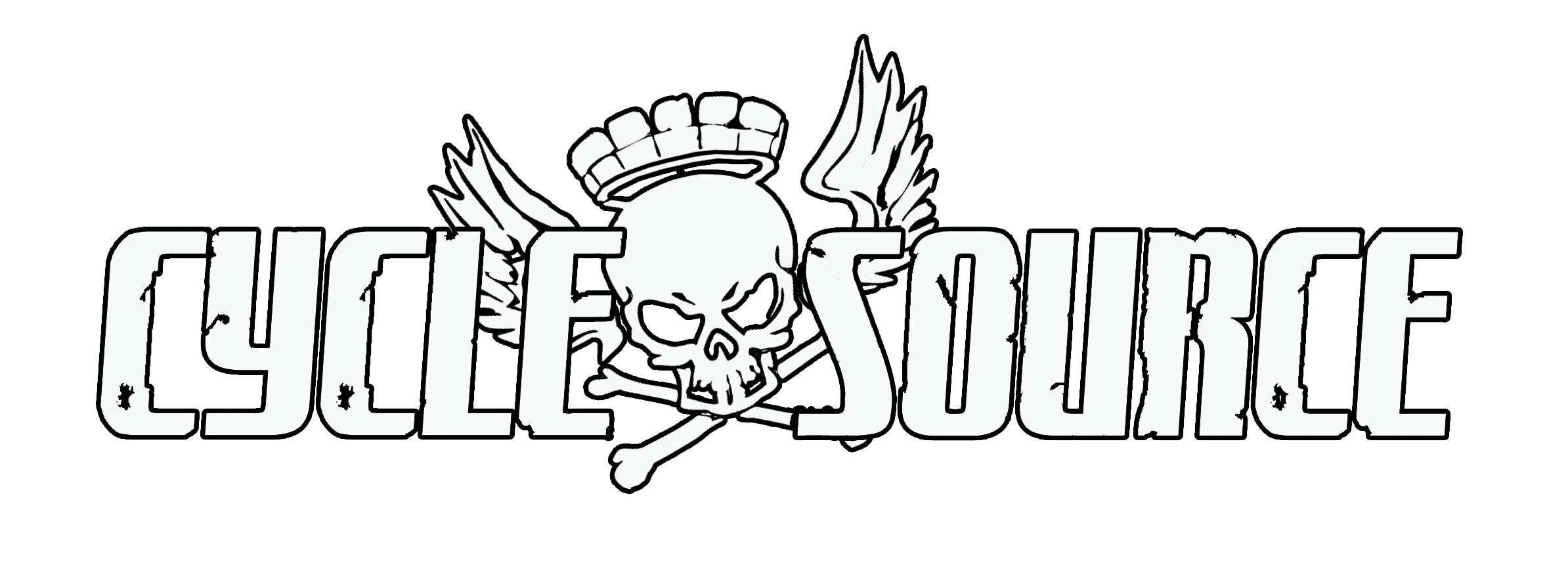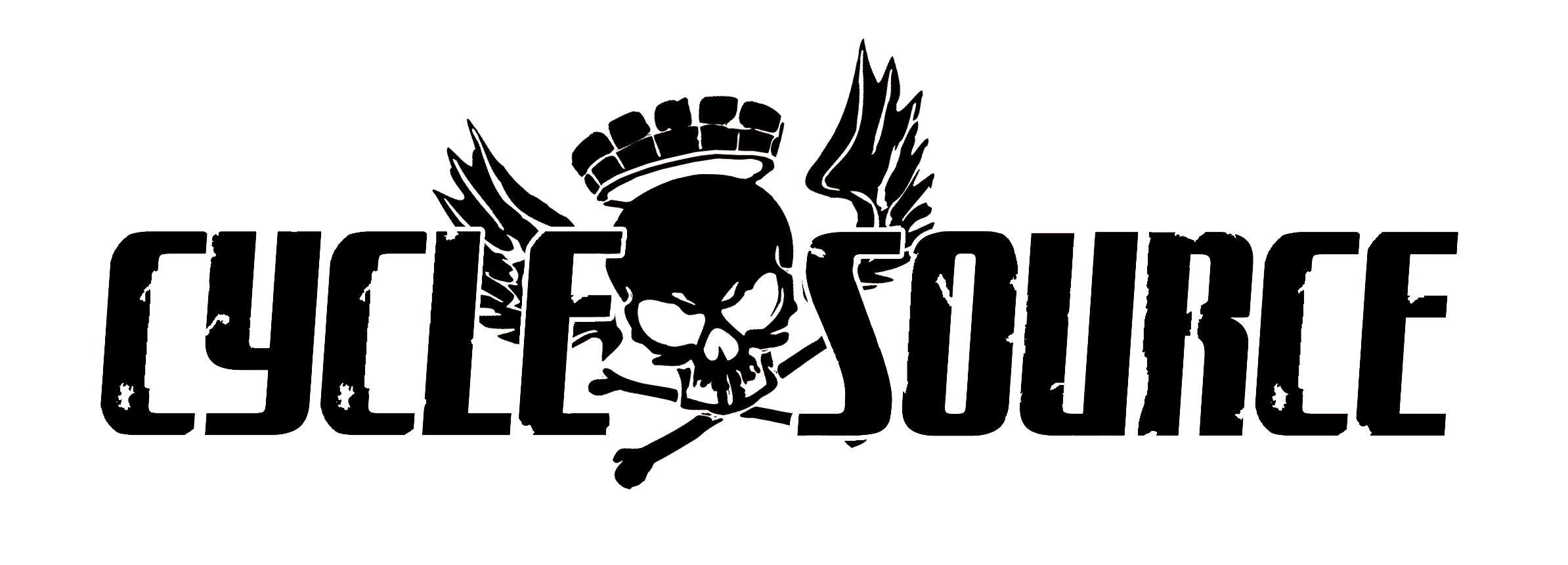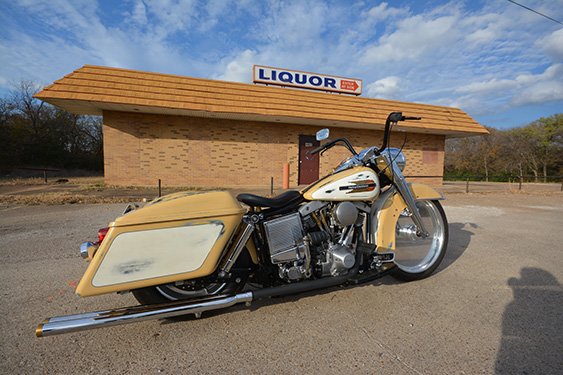Published In The March 2014 Issue Of Cycle Source
Article By: Warren Lane Photos By: Darren McKeag
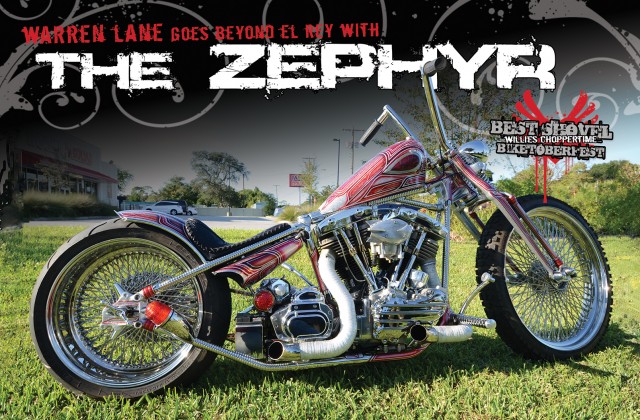
Hello, I’m Warren Lane and I built this motorcycle with my bare hands. This story is not about me. This story is about the love of motorcycles and the will and ambition to turn a dream into a tangible reality. I hope to inspire young kids to build their dreams and not let others tell them they “can’t.” Perhaps we may even convert a hipster or two into productive members of society. Don’t think I am some rich cat with a CNC and a 5000 square foot shop. I work just like the rest of you. I built this in my 18 x 24 home garage. I have a mill, lathe, drill press, band saw, and a TIG. Everything else is hand tools. With the exception of the tires, paint and battery, this motorcycle was built using parts and technology available in the 1940s. My only advantage is that I do not know what I am doing; therefore, I have no limits.
My Chopper Philosophy: I prefer to build my motorcycles using Genuine Harley-Davidson parts wherever possible. With the exception of the wheels and the parts I made, every major component is HD. Everything is built, not bought. You will notice that very few fasteners are used or seen. The traditional styles of choppers are ingrained in our society. They will never go away or be out of fashion, I build scoots that you can beat the shit out of and be proud: function first — form and good looks second. No gay ass, chrome covers. No complicated BS that is difficult to work on.
Next, I like to build in a modular fashion: designed for easy assembly and repair, with the ability to easily remove one system, without having to dismantle the whole scoot. Until now, El Rey was my “masterpiece.” I believe an artist is only as good as his last piece of work. I set out to build a chopper that was an improvement on El Rey.
Chris has been gracious and offered me the space to write what I want. Over the next few months I will describe in detail the fabrication and methods used to build most of the components on The Zephyr. Over time, some of you will be able to do it yourself.
In the Beginning: Inevitably, the question that everybody wants an answer to is how did I build this frame? Pay attention!
304L: The first order of business was to select the material for the construction of the frame. After a good bit of sourcing research, I found a company in Michigan that manufactured the tubing. This tubing is used in the Alaskan oil fields. For what, I do not know.
Required: 1” O.D. tubing with enough wall thickness to allow me to machine the grooves, while remaining durable enough for me to jam the gears and ride it hard. This tubing is 304L (L = low carbon), has a wall thickness of .242”, is DOM, and it is drawn cold over a mandrel (DOM). Not annealed. This means that this tubing was not heated during the DOM process. From experience and research, I knew that lack of heat and the incredible PSI required to form the SS tubing would yield a superior product. Whether or not I would be able to bend it was a question yet to be answered. The metallurgist did not know. They only used it in straight sections.
I bought enough tubing to build 2 frames and got down to business.
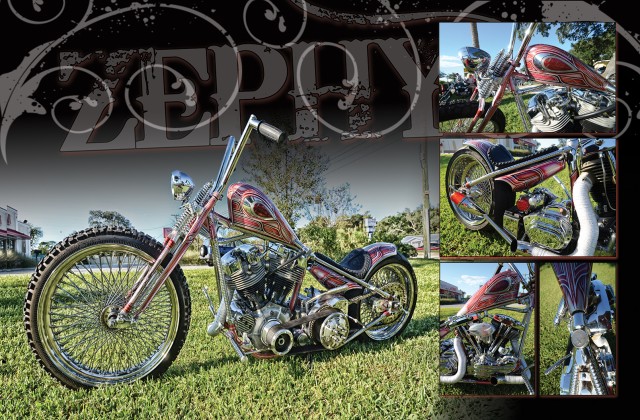
Man That’s Groovy! The grooves had to be machined. At the time, I only had an antique, Atlas home lathe. My grandfather bought this machine brand new and I learned to run the machine at 12 years old. Anyhow, I spun the material and began to apply force with the carbide 1/8” radius cutting tools I had found online. Nothing happened! The bit would not even scratch the surface. Questions abound! Was it the rinky-dink machine? Was it my tooling? Was it the fact that I am self-taught and don’t know what I am doing? I suspected the latter.
Unwilling to be defeated, I set off in search of answers. There is an old family machine shop in Miami called Mitchell’s Machine. I knew they would have the answer. I have been bothering that old man since I was old enough to drive. He told me to turn it as slow as my machine would go, jam the bit in there and use automatic transmission fluid as coolant. I used a center stand and re-positioned it after every 8 inches of “grooving,” otherwise the length would bow and not accept the cut. I did this for a week! That’s how long it took me to cut all of the grooves — manually. Man o man! My shop stunk like burnt trans fluid for a month!
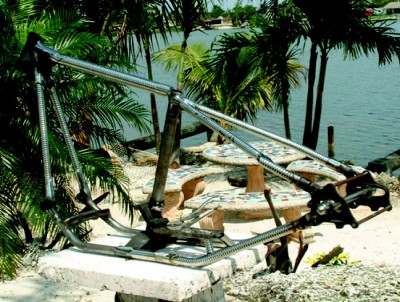
Getting Jiggy with it! For many years I had been saving a ‘56 frame that my friend Berry from Accurate Engineering had given me way back in 1997. It was time to put it to use. There is a frame table that Billy and I built years ago, also in 1997. I would use it. I removed all of the unwanted tubing and castings, bought a new neck and started fitting the pieces using the OEM construction method. I was pleasantly surprised to find the tubing formed and bent without difficulty. The 304L is welded to the Nodular Iron Forgings (not castings as most people call them) using 309 TIG wire.
At the risk of oversimplification, this is the process:
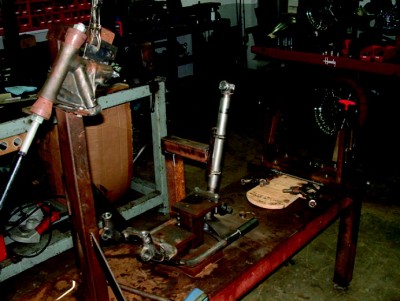 Build jig — install frame.
Build jig — install frame.
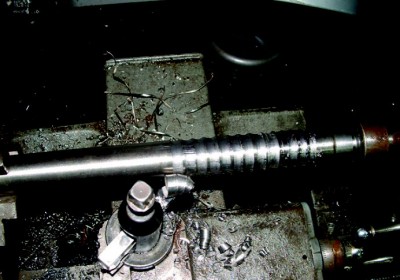
Machine straight lengths of tubing, as required, for use later.
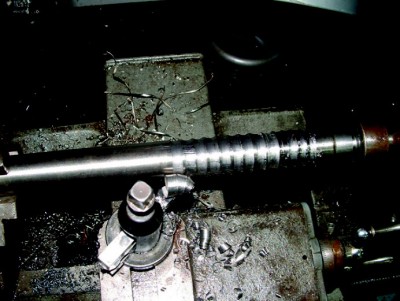
Select desired wheels, rake and ride height.
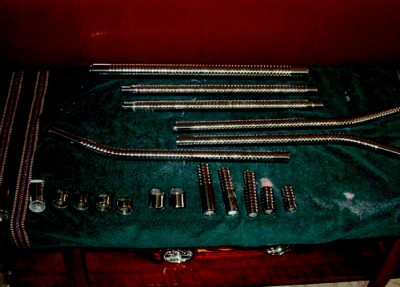
Fit and form the tubing to accommodate #3.
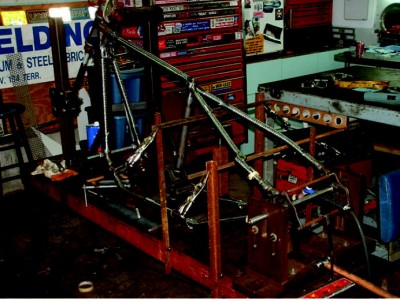
Fit all components into the jig / fixture, triple check for alignment and prepare for welding.
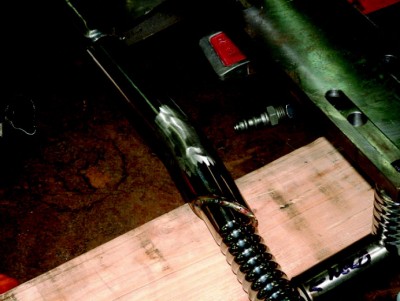
Once you have everything fit and ready to weld, you get to remove all of the pieces and polish.

Repeat #5 with polished tubes.
Weld, blend, finish polish.
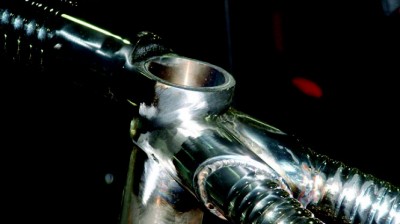
Stay tuned kids! Next lesson: We make a fuel tank! See ya when I see ya! Warren Lane! You can email me at hnic. miami@gmail.com and follow me on Instagram: Atomic_ metalsmith.com
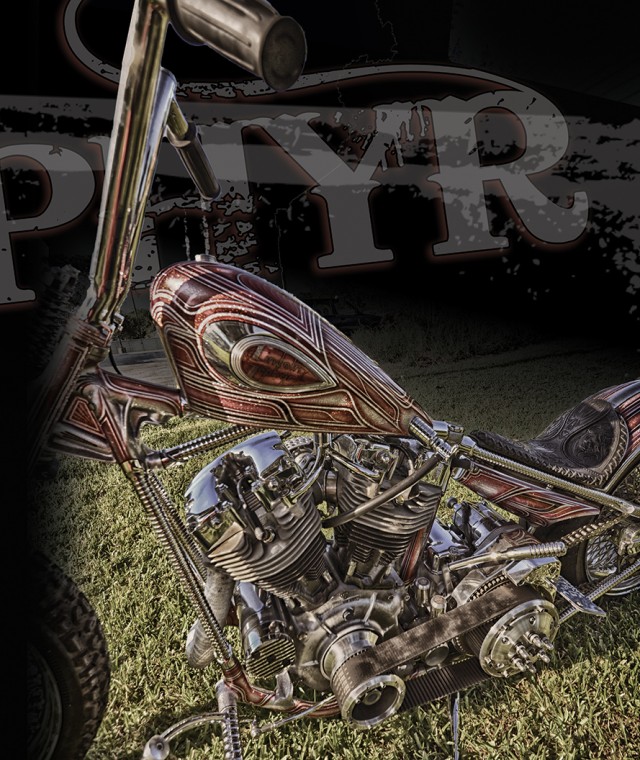
The Zephyr Tech Sheet
Owner: Warren “F**king” Lane
City: Miami, Fl
Fabrication By: Warren Lane
Year: 1964
Model: H-D
Time: 1000 Hours
ENGINE
Year: 1964
Model: FLH
Builder: H-D/Warren Lane
Ignition: Electronic
Displacement: 74”
Pistons:
Heads: S&S
Cam(s): Andrews B
Carb: S&S Super E
Air Cleaner: Landstroms Foundry / Warren Lane
Exhaust: Warren Lane
Primary:
TRANSMISSION
Year:
Make: H-D
Shifting: 5-Speed
FRAME
Year: 1957
Make: H-D FL
Rake:
Stretch:
FRONT END
Type: 1935 VL Springer
Builder: H-D
Extension:
Triple Trees:
WHEELS
Front Wheel: 120 Spoke
Size: 23”
Tire: Bridgestone
Brakes:
Rear Wheel: 120 Spoke
Size: 17”
Tire: Avon
Brakes: Disc
PAINT
Painter: Mo
Color:
Type: Paint
Graphics:
Chroming: Brown’s Plating
ACCESSORIES
Bars: 1 1/4” Warren Lane
Risers:
Hand Controls: Warren Lane
Gas Tank(s): Handmade – Warren Lane
Front Fender: None
Rear Fender: Warren Lane
Seat: Pan – Warren Lane / Leather – Adam Croft
Foot Controls: Warren Lane
Oil Tank: Warren Lane
Headlight: ‘50s Cadillac
Taillight: ‘54 Cessna Beacon
speedo:
Photographer: Darren McKeag
